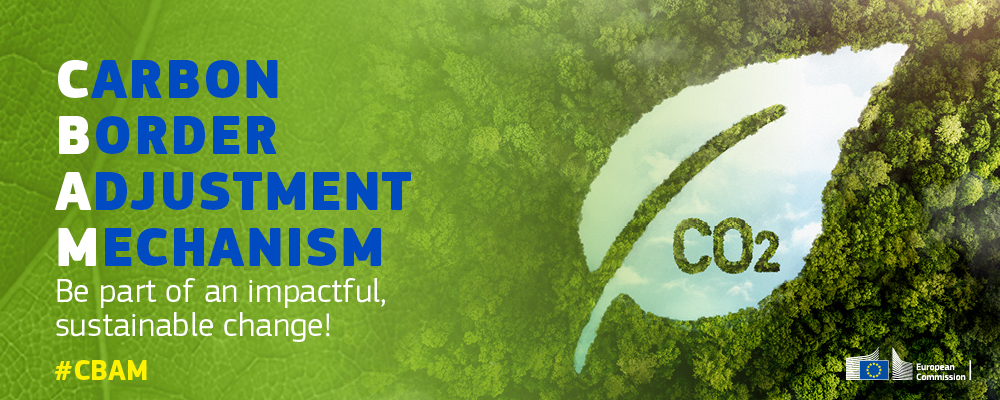
CBAM
Carbon Border Adjustment Mechanism (CBAM): The Beginning of a New Era
Global warming and climate change are forcing governments around the world to develop more sustainable policies. In this direction, the European Union (EU) has taken an important step to reduce carbon emissions and achieve its climate targets by introducing the Carbon Border Adjustment Mechanism (CBAM). This mechanism aims to regulate carbon pricing in foreign trade in order to both reduce the carbon footprint and achieve the EU’s climate neutrality target. So, what exactly is CBAM, why is it so important and how will it affect the business world?
What is CBAM?
CBAM is a mechanism adopted in 2023 as part of the EU’s efforts to reduce carbon emissions. This mechanism aims to impose a carbon price on goods imported into the EU to limit carbon emissions. It is a system in which countries, especially those operating in carbon-intensive sectors, must reflect their carbon costs in the products they export to the EU. This regulation aims to ensure that the carbon footprint of goods produced outside the EU is priced at the same level as the emissions trading system (ETS) applied to the same materials within the EU.
What are the Objectives of CBAM?
CBAM has several main purposes:
1.Achieving Global Carbon Equitisation: The European Union aims to equalise carbon costs in cross-border trade and prevent carbon leakage. Carbon leakage is when producers shift their production activities to other countries with looser regulations because one country has stricter carbon regulations. This makes it more difficult to reduce global emissions.
2.Protecting Local Industry: While companies in the EU face high costs to reduce carbon emissions, production at lower costs in countries outside the EU may disadvantage the domestic industry. The CBAM aims to prevent this unfair competition by subjecting imported products to carbon costs.
3.Supporting Green Transformation: CBAM also aims to encourage countries outside the EU to adopt greener production methods by creating pressure to reduce carbon emissions. This makes it easier to achieve sustainability goals globally.
Scope and Operation of CBAM
The scope of implementation of CBAM is limited to energy-intensive sectors in the initial phase. High carbon emitting sectors such as iron and steel, aluminium, cement, fertiliser and electricity are the main targets of the mechanism. Companies operating in these sectors will report the amount of carbon they produce in their exports to the EU and pay a carbon price based on this amount.
The functioning of the mechanism can be summarised in the following steps:
•
Importers shall calculate the carbon content of the products they bring into the EU and notify the relevant authorities.
•
The carbon emissions of these products will be compared with those of products subject to the ETS system in the EU and the difference will be collected through CBAM if there is no similar carbon pricing in the importing country.
•
CBAM certificates will be used by importers to pay for carbon costs and will be purchased at the price set by the EU.
Impacts of CBAM on the Business World
CBAM means a major change for global trade. In particular, companies exporting to the EU will have to be more transparent about their carbon emissions. Businesses need to develop various strategies to adapt to this new regulation:
1.Investing in Cleaner Production Technologies: Companies that want to reduce their carbon footprint should move towards more efficient and cleaner energy-based production methods. This is a necessity to alleviate the cost burden of CBAM in the long term.
2.Supply Chain Management: Businesses will have to review all stages from raw materials to the final product to minimise carbon emissions in their supply chains. This process may make sustainable supply chain practices mandatory.
3.Competitive Advantage: Companies that comply with CBAM and emit low carbon emissions may gain a competitive advantage in the EU market. In addition, the products of companies with green certificates may stand out in consumer preferences.
4.Legal Harmonisation: CBAM is a mechanism that affects not only the EU but also all countries exporting to the EU. Therefore, especially export-oriented businesses will need to take the necessary steps to comply with this legal regulation. Otherwise, they may face severe financial sanctions.
Conclusion
Carbon Border Adjustment Mechanism is the beginning of a new era in the fight against climate change. With this mechanism, the EU aims both to protect its domestic industry and to promote cleaner production processes globally. Although CBAM may cause cost increases in the short term, it is an important step to accelerate green transformation in the long term. In order to be successful in this new era, companies will need to develop fast and effective strategies in the areas of carbon management, sustainability and legal compliance.
The successful implementation of CBAM will change the nature of global trade and contribute to strengthening policies aimed at reducing the carbon footprint. Therefore, CBAM is an important step not only for Europe but for the whole world.
